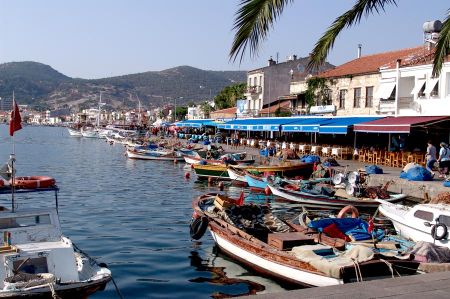The charming fishing town of Foça near Izmir
- Written by Portal Editor
The idyllic fishing town of Foca, just 70 kilometres from Izmir, is a popular holiday destination with beautiful and clean sandy beaches, well-kept restaurants, accommodation and several other attractions.
Foça has two natural bays (Büyükdeniz and Küçükdeniz) and boasts of its offshore islands; one of them, the "Siren Island", was mentioned in many Greek mythologies.
Today's Foça has been largely spared from foreign mass tourism and is instead a popular weekend and holiday destination for the residents of Izmir. The reason for this is primarily that the Turkish military is stationed in a bay directly adjacent to the new port and thus the expansion of the town on the coast was largely prevented.
The specialty in many fish restaurants - papalinas
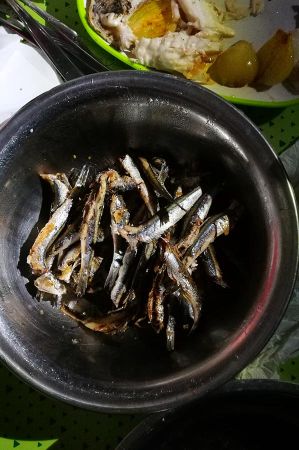 A special highlight is a visit to one of the numerous fish restaurants at the harbour, where, among other things, there is a regional specialty - grilled papalinas.
A special highlight is a visit to one of the numerous fish restaurants at the harbour, where, among other things, there is a regional specialty - grilled papalinas.
The fish species, which is translated as papal sprat, is found everywhere in the shallow waters of the Mediterranean, but here it has a special taste due to the influx of abundant fresh water.
In winter, the sprat's preferred habitat is in the shallow coastal waters, while in summer the habitat changes towards the estuaries and into deeper waters, sometimes up to 150 meters deep, most commonly between 30 and 70 m deep.
In the picturesque harbour of Foça - fish restaurants dominate the picture
A few kilometres outside of Foça, Club Med was established in the 1970s; In Foça itself, however, the original flair has been preserved, although holiday homes, a few guesthouses and two hotels have been built here over the last two decades. In the picturesque harbour there is one fish restaurant after another. This is where locals from Izmir who want to escape the hustle and bustle of the big city meet here on weekends. The typical audience is made up of the upper Turkish middle class: teachers, artists, musicians and engineers meet here.
If you are on holiday for a longer period of time, you should prefer Yenifoça, about 20 km north, which is not as spectacular in terms of scenery, but offers enough hotels and holiday resorts for domestic and foreign tourists.
The Siren Island - described by Homer in his Odyssey
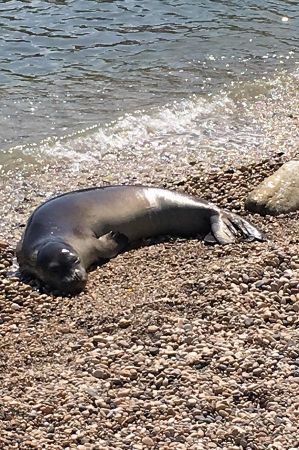 Foça is also known for the Siren Islands, which Homer already described in his Odyssey. Today, however, they are more famous for being home to some of the last seals in the Mediterranean. The rare monk seals live off the coast of Foça. They do nothing different than vacationers, they lie relaxed on the beach and enjoy their existence. There is (rightly) a lot of fuss made about the rare animals; They have been under special protection since 1990.
Foça is also known for the Siren Islands, which Homer already described in his Odyssey. Today, however, they are more famous for being home to some of the last seals in the Mediterranean. The rare monk seals live off the coast of Foça. They do nothing different than vacationers, they lie relaxed on the beach and enjoy their existence. There is (rightly) a lot of fuss made about the rare animals; They have been under special protection since 1990.
For this reason, the Siren Islands can now only be viewed from a distance. They are uninhabited and are used by the local population to release a small number of goats, which can feed on the very sparse vegetation and the morning dew as liquid, as the islands have no natural water supplies.
But it's not just the coast with its beautiful beaches and the deep blue waters of the sea that make Foça so popular, but also the wonderful landscape of the hinterland. Wide olive groves extend inland and give the area its own unique flair.
Historical development of the city of Phokaia under the Ionians
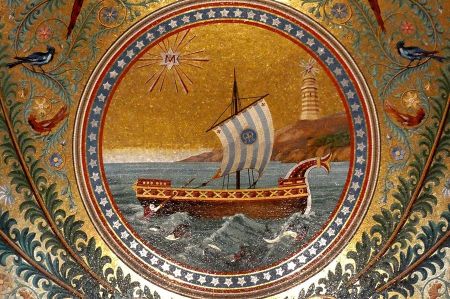 Phocaea, also Phokaia, was an ancient Greek city in Asia Minor, located on the peninsula between the Gulf of Elaea and that of Smyrna. It was populated by Ionians, but was in Aeolia. The city had a very good harbour, in front of which lay the small island (Bakchion) studded with temples and palaces. According to Herodotus, Phocaia is the creator of the first fifty-oared longships (pentekontere) and is located in the region with the best climate in the world, where hills hug a wide, well-sheltered bay.
Phocaea, also Phokaia, was an ancient Greek city in Asia Minor, located on the peninsula between the Gulf of Elaea and that of Smyrna. It was populated by Ionians, but was in Aeolia. The city had a very good harbour, in front of which lay the small island (Bakchion) studded with temples and palaces. According to Herodotus, Phocaia is the creator of the first fifty-oared longships (pentekontere) and is located in the region with the best climate in the world, where hills hug a wide, well-sheltered bay.
Phocaia was one of the twelve cities of the Ionian League - the Greek Dodecapolis in Asia Minor - along with Chios, Klazomenai, Kolophon, Ephesus, Erythrai, Lebedos, Miletus, Myus, Priene, Samos and Teos. Although these cities were united in a league, they only had very loose connections with each other. This put them in a weak position when, from the 7th century B.C. BC had to compete against enemy powers (the Lydians, the Cimmerians and especially the Persians under Cyrus II from 546 BC)
Remains of the Theatre of Phokaia
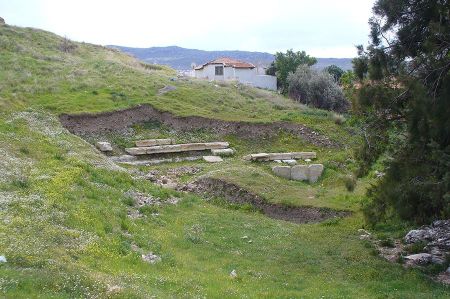 The Greek cities of Asia Minor maintained active trade relations with their neighbour, the rich and prosperous kingdom of Lydia. At the beginning of the 7th century B.C. As invaders from the north - the Cimmerians - ravaged Lydia and the territory of the Greek cities, the Lydian king Gyges pursued a policy of alliances and conquests, with Lydians and Greeks joining together to fight their common enemy. Gyges died in battle, but his successors, after peace had returned, reestablished their kingdom and placed the Greek cities under their administration. The Greek cities continued to govern themselves, but had to pay tribute and provide a military contingent if necessary. Conversely, the Lydians were influenced by Greek culture.
The Greek cities of Asia Minor maintained active trade relations with their neighbour, the rich and prosperous kingdom of Lydia. At the beginning of the 7th century B.C. As invaders from the north - the Cimmerians - ravaged Lydia and the territory of the Greek cities, the Lydian king Gyges pursued a policy of alliances and conquests, with Lydians and Greeks joining together to fight their common enemy. Gyges died in battle, but his successors, after peace had returned, reestablished their kingdom and placed the Greek cities under their administration. The Greek cities continued to govern themselves, but had to pay tribute and provide a military contingent if necessary. Conversely, the Lydians were influenced by Greek culture.
The sculptor Telephanes who, according to Pliny (Naturalis historia XXXIV, 68) is said to have been for the kings Darius I and Xerxes I, possibly came from Phokaia.
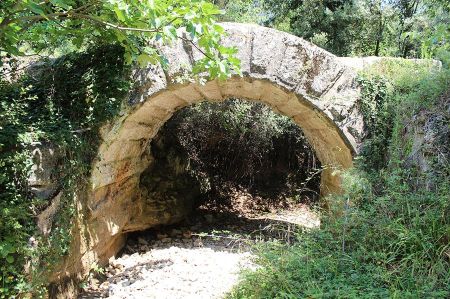 The Greek cities of Asia Minor were prosperous, and their wealth grew as they expanded relationships with the colonies they had founded around the Mediterranean. This is how Phokaia was founded in the 6th century BC. BC became the metropolis (mother city) of the Greek colonies in the western Mediterranean. The Phocaeans successively founded Massalia (Marseille) near the mouth of the Rhône, then Auenion (Avignon), Agathe Tyche (Agde), Aigitna (Cannes), Antipolis (Antibes) and Nikaia (Nice), Allalia (Aléria), a trading post on the east coast of Corsica, and Hyele (Elea) in southern Italy, as well as powerful colonies in Spain, such as Emporion (Empúries) in Catalonia. The Greek word empórion referred to a maritime trading place.
The Greek cities of Asia Minor were prosperous, and their wealth grew as they expanded relationships with the colonies they had founded around the Mediterranean. This is how Phokaia was founded in the 6th century BC. BC became the metropolis (mother city) of the Greek colonies in the western Mediterranean. The Phocaeans successively founded Massalia (Marseille) near the mouth of the Rhône, then Auenion (Avignon), Agathe Tyche (Agde), Aigitna (Cannes), Antipolis (Antibes) and Nikaia (Nice), Allalia (Aléria), a trading post on the east coast of Corsica, and Hyele (Elea) in southern Italy, as well as powerful colonies in Spain, such as Emporion (Empúries) in Catalonia. The Greek word empórion referred to a maritime trading place.
Phocaean colonies
Massalia (Marseille)
Auenion or Aouennion (Avignon)
Agathe Tyche (Agde)
Aigitna (Cannes)
Antipolis (Antibes)
Nikaia (Nice).
Alalia or Allalia (Aléria)
Hyele (Elea)
Emporion (Empúries/Ampurias)
Tauroeïs (Le Brusc)
Olbia (Sardinia)
Destruction of the city
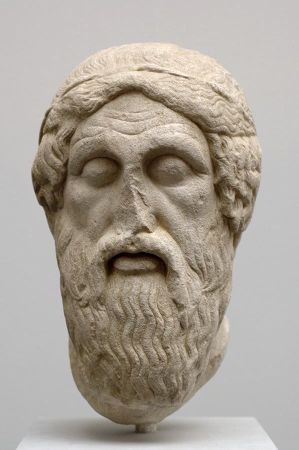 In the year 546 B.C. In 400 BC Phocaia was taken by the Persians under Cyrus the Great. The rich families of the metropolis had enough time to escape and seek refuge in their colonies, thereby contributing to their development. However, the site of Phocaea was not completely abandoned, as was the case in the 4th century BC. The Theatre was built in the 1st century BC. The famous Temple of Athena collapsed after an earthquake in the 2nd century AD, but was rebuilt from marble by the Romans.
In the year 546 B.C. In 400 BC Phocaia was taken by the Persians under Cyrus the Great. The rich families of the metropolis had enough time to escape and seek refuge in their colonies, thereby contributing to their development. However, the site of Phocaea was not completely abandoned, as was the case in the 4th century BC. The Theatre was built in the 1st century BC. The famous Temple of Athena collapsed after an earthquake in the 2nd century AD, but was rebuilt from marble by the Romans.
Phocaea was inhabited until the end of the Byzantine period in Asia Minor in the 14th century, but still exists. It is now called Foça and is commonly called Eski Foça (Old Foça) because there is also a Yenifoça (New Foça) which is around 20 km away.
Please also read:
Selcuk near Izmir nect to Isa Bey Mosque
https://www.alaturka.info/en/turkey-country/aegean/6604-the-charming-fishing-town-of-foca-near-izmir#sigProIde317d6d825
